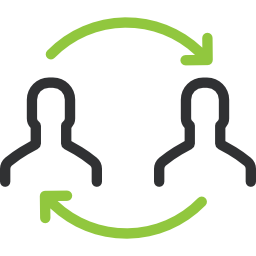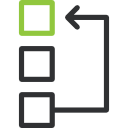Engagement Process
Leverage our over decade-long expertise in enterprise software development, custom business systems, modernising legacy systems, and consolidating app portfolios.

DISCOVERY
In the discovery phase, we will listen to your specific goals, explore your existing systems, and craft a plan for a technological solution. Expect face-to-face meetings and interactive design sessions with our top analysts.
Out of this intensive collaboration, you’ll have a clear schedule and timeline for the project; confidence in our mutual understanding of the problem; and a scope and architecture for a solution that is tailored to fulfill your needs, hopes and wishes. Spring’s meticulous discovery process lays the foundation for our future success.
At the close of our discovery phase, we’ll have developed:
1. a “project vision”, consisting of epics, a model of the project domain and business processes, and the non-functional requirements.
2. an initial architecture; a high-level design of the software system to be built
3. a suggested project approach; recommendations on the delivery methodology, including duration, project cadence, and team structure.

FOUNDATIONS
We know your challenge, and now we pave the road to solve it.
When we have a good idea of who you are, what you need, and how we’re going to solve it, we begin the development project with a short 1-4 week inception, or “Sprint 0” phase.
During foundations, we define a prioritised list of features that form the basis of future development work, then organise teams and work environments, ensuring that construction can begin unhindered.
You’ll be introduced to a project team we assemble specifically for you. Your team will work closely with you to ensure the product features meet your criteria before they’re “done,” brainstorm and storyboard user interfaces (the screens that you’ll see and work with in the final product), and prepare you for the construction process. We’ll give you a clear idea as to what we’ll need from you and how you can monitor our progress. Sometimes, we’ll also deem it useful to undertake a prototype or proof of concept to verify that we’re on the right track
At the end of inception, you’ll have:
1. a prioritised product backlog,
2. a thorough understanding of the development work that will be completed at the beginning of the development phase,
3. a scheduled cadence to follow for the remainder of the engagement, and
4. established development environments.
The foundations stage ensures complete alignment on the expectations and activities during the development phase and will provide you a detailed path to actualising your software vision.

BUILD
Development is the phase where your vision becomes reality. With our agile software development approach, you’ll be able to see working code in as little as two to three weeks after we begin.
The development phase is made up of successive time-boxed “iterations” (or sprints), where each iteration takes the same form. Typically our iterations last two to four weeks, depending on your project requirements.
Why iterations? We recognise that challenges arise and requirements change throughout the development process. Building a product with non-iterative, whole components, called the “waterfall” approach, makes design adaptation costly and time-consuming – just imagine altering your cookie recipe once they’re in the oven. Iterative design consists of cross-functional teams working simultaneously on a series of features, meaning not only a faster build time, but a flexible and efficient development process.
To begin, an iteration is assigned a series of features to implement in each sprint, the so-called sprint planning. Our team has daily check-ins (“scrums”) where progress is reported and issues can be raised. The features are implemented and tested, and at the end of each iteration, they are presented to you in the sprint demo. We then hand the working system over to you for feedback and review.
And to make sure each sprint is more effective than the last, we take a short time to reflect on what went well and what could be improved (“retrospective”). In parallel, we are also working on defining the details of features that will be implemented in the upcoming sprints by exploring possible solutions, finalising business rules, and sketching user interfaces.
We keep iterating until your product has sufficient functionality to move into production release! And then, if the project calls for it, we keep building on the first release functionality to make your project even better. At the end of the development phase, you’ll have a consumable product that meets the current needs of your stakeholders.

LAUNCH
Enter the transition phase, where we successfully deploy the working system into a live and usable environment.
We’ll work with you to determine the logistics and mechanics of the release, such as where and when to deploy, whether the new system will run in parallel with the old, or if any data migration needs to take place.
At the end of transition your software vision will be fulfilled.
Spring can also provide ongoing support and maintenance services beyond the launch phase.

